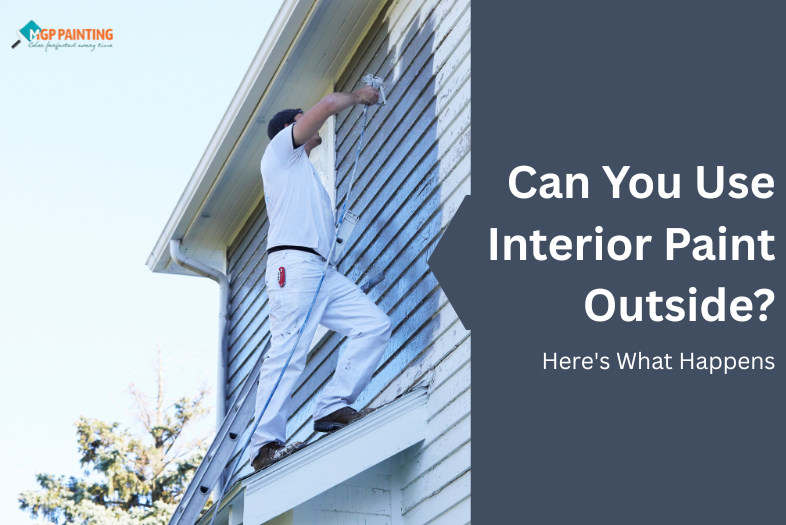Can You Use Interior Paint Outside? Here's What Happens
Ever stare at a half-used can of interior paint and think, “Well, I can just put this on the porch, right?” You’re not the only one.
There’s also the temptation to just reuse paint and not make a run to the store. While it seems convenient, using interior paint outside can lead to big headaches later. Here’s why it’s not a good idea—and what you should use instead.
Why Interior Paint Isn’t Meant for the Outdoors
Interior paint is formulated for the stable, temperature-controlled environment inside your home. It’s made to resist fingerprints, mild scuffs, and light cleaning—but not for protecting against UV rays, moisture, or extreme heat fluctuations.
Here’s what interior paint lacks:
- UV resistance: Sunlight will rapidly degrade interior paint, making it fade, chalk, or peel.
- Moisture protection: In mere weeks, rain, snow, and humid air will make it blister and flake.
- Flexibility: Interior paint isn’t built for the outdoors. It lacks the flexibility to expand and contract with changing temperatures, which leads to cracking.
If you're curious about how interior and exterior paints are chemically different, check out our article: Interior vs. Exterior Paint: What’s the Real Difference?
Can You Use Interior Paint Outdoors?
Technically, yes. But it doesn’t mean you should.
Even in shaded areas like covered porches or beneath awnings may seem protected, but interior paint still breaks down fast. Within a single season, you may notice:
- Peeling or bubbling
- Faded or discolored patches
- Mold or mildew is starting to grow
- Weak bonding to surfaces like wood, stucco, or vinyl
If you're wondering about crossover use, read our take on using interior or exterior paint in the wrong place.
What Happens If You Use Interior Paint Outside?
Let’s say you’ve already done it. Here’s what you’re in for:
| Problem | Why It Happens | How Soon You'll See It |
|---|---|---|
| Peeling | Moisture gets underneath the paint | 1–3 weeks |
| Fading | UV rays break down pigments | 2–4 weeks |
| Cracking | Paint can’t flex with temperature changes | 1–2 months |
| Stains or mildew | No antifungal agents in interior paint | Ongoing |
| Wasted time and money | You’ll need to repaint with exterior-grade materials | Inevitable |
Can You Use Interior Paint on Exterior Walls with Primer?
Some DIY forums suggest using a heavy-duty primer to “seal” interior paint outdoors. While that may buy you a little time, it’s not a permanent fix. Exterior paint is chemically formulated to last outside, even over primer. No primer can turn interior paint into exterior-grade protection.
The Right Way: Use Paint That’s Made for the Outdoors
Exterior paints are formulated with additives that fight UV rays, resist mold and mildew, and flex with seasonal changes. They cost a bit more, but they save you:
- Time (fewer repaints)
- Labor (less scraping and sanding)
- Money (less long-term maintenance)
Some of the best exterior paints for Bergen County weather include:
- Sherwin-Williams Duration or SuperPaint (great for vinyl, wood, or stucco)
- Benjamin Moore Aura Exterior (rich color + high durability)
- Behr Premium Plus Ultra Exterior (budget-friendly and mildew-resistant)
Looking for help with the application? Our exterior house painters in Bergen County know what works and what doesn’t.
Still Unsure? Call the Pros Before You Paint
If you’re dealing with a mixed-use space—like a covered porch or garage—it’s easy to get confused. The safest move? Talk to a local pro.
Our experts at MGP Painting know exactly what kind of paint works for your climate, surface, and long-term goals. We serve homeowners throughout Bergen County and surrounding areas, helping you avoid costly mistakes and get the job done right the first time.
Call 845.290.5284 or contact us online for a free estimate and product recommendation.
Bottom line? Interior paint belongs inside. If you want your exterior to last, make the right choice the first time.
Helpful Reads:

